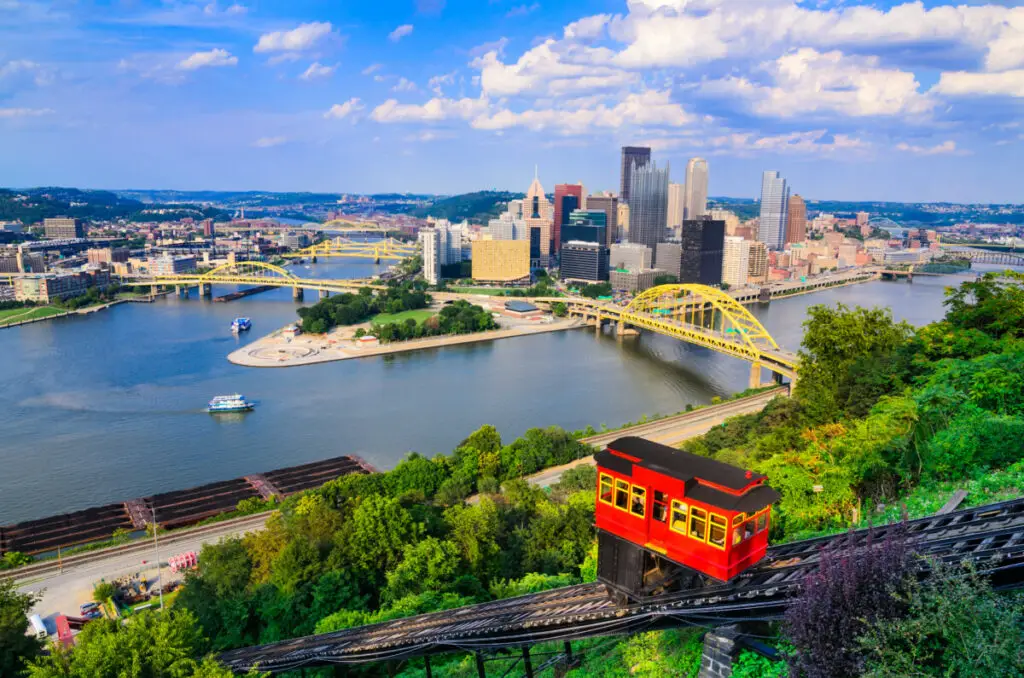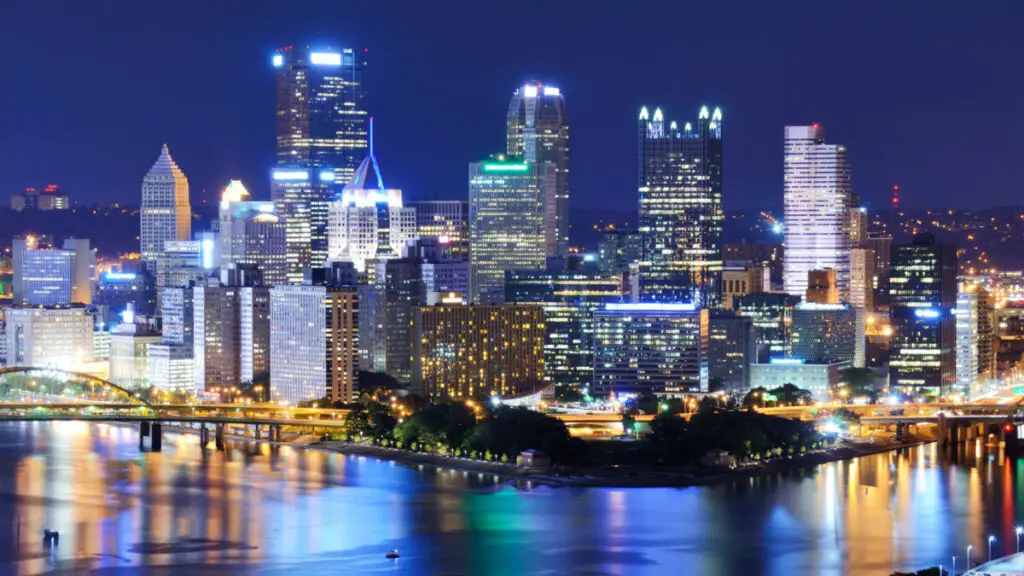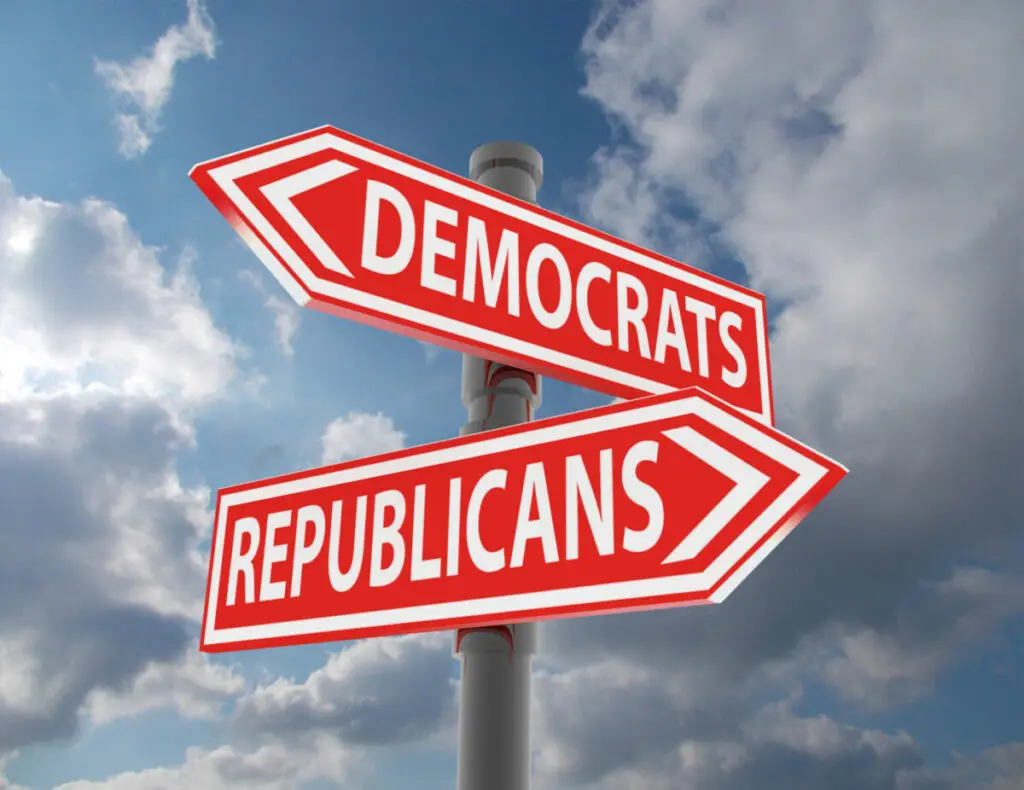
Pittsburgh is a place of rich political history. What kind of political preference has this history led to?
Pittsburgh is a steadily liberal state, voting for democratic mayors since 1858. This contrasts with the rural areas of Pennsylvania, which tend to lean toward the right. The urban left and rural right balance each other to make Pennsylvania a swing state.
Pittsburgh stands out as one of the oldest cities in the United States. They’ve voted democrat for over a hundred years, but how much of this is their past and how much of it is the urban tendency to vote blue?
The Political Past of Pennsylvania
Pennsylvania has a rich history in the United States as one of the original thirteen colonies and hosted English colonies long before the United State of America became a true country.
Pennsylvania has tended to vote Democrat in elections for the past twenty years, but is an established swing state, having leaned to the right for much of the 20th century.
Pennsylvania holds many historical sites from the founding of America, and before the founding was established for freedom of religion. Pennsylvania was always meant to be a place for free-thinking and the sharing of ideas. It was the second state to ratify the Constitution, and it was where the Battle of Gettysburg was fought for the rights of African Americans in the 19th century.
It was also the birthplace of one of the Founding Fathers. Benjamin Franklin was known for his ingenuity in founding America and as an inventor and scholar. Pennsylvania has since become a leader in the American industry and is still known today for steel production, and famous names in the business like Andrew Carnegie.
They have a red, rural center sandwiched between two blue cities, Pittsburgh and Philadelphia. Cities, in general, have always been blue, while the countryside is known for being red. One theory as to why this is is that cities tend to hold on less to traditional, conservative values. But with the living history in Pittsburgh, do traditional values win out, or is Pittsburgh another urban blue dot in a sea of the red countryside?
Pittsburgh’s History

Everything about Pittsburgh screams “city”. Known for the Steelers, Kennywood, and pierogies, it’s a beautiful city of culture and history. It’s been a hotspot for industry, progress, and people for centuries.
It is full of resources like steel and coal that have attracted business to the city, making it a thriving metropolis. The industrial revolution led to many people migrating to Pittsburgh in search of work in the many factories and mills within the city. This was a double-edged sword, it brought a lot of urbanization to Pittsburgh but filled the city with pollution and poor working conditions.
Materials like steel and coal were lucrative in the 19th and 20th centuries, but producing them caused a lot of dirt and soot in the air and on the streets. To keep their goods cheap, manufacturers would pay their employees very little, and sometimes force them to room and board with the company so they could collect back on the meager paychecks in rent.
Today, Pittsburgh is still a major player in the production of raw materials. It also possesses many museums, art galleries, and historical sites. Working conditions have improved, and the city is less of an industrial tyrant than it was. Pittsburgh is also closer to the ocean and was the receiver of much immigration a hundred years ago.
The city did experience a “golden age” when its population increased sixfold between 1870 and 1910. The introduction of the railroad certainly encouraged this population boom, bringing in people as well as businesses as more hopefuls invested in railroad lines.
Within Pennsylvania, Pittsburgh competes as the most influential city with Philadelphia. The City of Brotherly Love leans more historical, but can’t compete when it comes to the industry. Like Pittsburgh, Philadelphia votes blue, forming the other half of Pennsylvania’s blue “walls” that stand on either side of a red area.
Outside of Pennsylvania, Pittsburgh is still a landmark and strong player in the world of business. Their influence in the manufacturing of raw materials isn’t their whole identity, however.
Smaller businesses are finding it easier to fill the gaps in Pittsburgh’s streets, and the monopolies that once ruled the city have faded to reputable names in museums, schools, and whatnot. With such a strong standing as a city, does that mean Pittsburgh follows other cities in voting consistently liberal? Recent elections show the answer is yes.
Does Pittsburgh Align With its State?
Pennsylvania is a swing state and has switched between liberal and conservative before. Pittsburgh itself seems to be a reliable liberal city, a twin to the blue Philadelphia. It isn’t entirely clear why cities are always liberal, but they have been for decades. The more urban an area, the bluer it is as well.
One theory about this phenomenon is that cities are more anonymous, which means their citizens don’t feel the same need to support traditional values held by conservatism. The more anonymous a person feels the less support they receive from their neighbors, and the more likely they are to lean on the government and drift away from traditional mores. This leads densely packed cities to turn blue, and open country to pick red.
Pennsylvania has two major cities, which are blanched out by the country that surrounds them. Pittsburgh is a very urban sort of place, with a large population kept afloat by manufacturing plants. It was a site for major workplace reform during the Industrial Revolution, and as a result, is a very progressive city. In the outskirts of Pittsburgh, countryside and farmland grows crops and raise hogs for slaughter. It isn’t surprising that outside of the bustling city, Pennsylvania is more traditional and more conservative.
Pennsylvania is one of the USA’s oldest states and is very proud of its history in the founding of America and fighting for the Union in the Civil War. Pennsylvania’s swing status makes it a state to watch in elections, but Pittsburgh has made its stance as liberal clear and doesn’t have any plans to change in the future. Pittsburgh is a liberal city and balances its progressivism with its rich history. It will most likely continue to balance out the rural parts of its home state
Recent Elections in Pittsburgh
The present mayor of Pittsburgh, Edward Gainey, was voted into office in January of 2022. Elections for his position were held in November 2021, and his terms will last until January of 2026. His predecessor was Bill Peduto, also a registered Democrat.
Alongside the mayor, the city is managed by a City Council of nine members, each voted into office by one of Pittsburgh’s nine districts. Currently, all nine members of the City Council are Democrats. While Bobby Wilson of District 1 was voted in as recently as 2020, some members of the Council have been making changes in Pittsburgh since 2008.
Pittsburgh also has a group of Constable, who are mainly Democrats with a handful of nonpartisans, Libertarians, and Republicans in the mix.
Pennsylvania’s Status as a Swing State

Pennsylvania has been a swing state for years, making it a place to watch during any US election. Swing states are states that are not reliably Democrat or Republican. Some states are set on one political track and don’t need any kind of enticement to vote one way or another. For example, Texas is a steady Republican state, and California always goes Democrat.
Pennsylvania could give either side its twenty electoral votes. Politicians will work harder on swing states because those are the states that make or break an election. Swing states can also be an indication of how political candidates are being received by the average American.
Less pressure to vote one way or another means citizens can be more honest about how they really feel about each candidate. How much time, money, and effort a politician spends in a swing state can indicate how sure they feel about the election, and how willing they are to go the extra mile.
Pennsylvania is most likely a swing state because it contains two cities kept on opposite ends of the state. The side of Pennsylvania is heavily blue, so they aren’t swallowed up and forgotten in the red countryside.
Gerrymandering is a tactic used by many politicians on both sides to split up voters into smaller groups to force a state into one box or the other, but the way Philadelphia and Pittsburgh are placed makes it difficult to lump the two together or cut them to pieces.
They make Pennsylvania a more balanced state, although Pennsylvania has voted for more Democrats in recent elections than Republicans. The City of Bridges and City of Brotherly Love won’t budge in their liberal traditions, but Pennsylvania may still surprise voters and politicians in the future. Either way, it’s a state to keep an eye on if you’re running for President in the United States.
Related Topics:
If you like the article above, here are some other similar articles you should check out!
Is There Public Transportation in Pittsburgh, PA?
